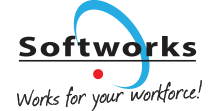If your organisation is attempting to function without an effective workforce management strategy, they will struggle to achieve the level of productivity, cost effectiveness, flexibility and agility required to compete and adapt to today’s marketplace.
Your workforce management strategy needs to focus on all the activities that are required to
manage and sustain a productive, cost-effective and happy workforce. This means consistent policies and procedures around managing employee time and attendance, scheduling and absences.
In today’s highly regulated global economy this is no easy task. Areas such as compliance now extend far beyond local, state, and national borders. The job of ensuring compliance and keeping up to date with legislation and regulations has become increasingly difficult and complex. As more and more organisations are discovering, failure to comply is very serious and can result in hefty fines and legal implications, along with a fall in employee
morale and bad publicity.
It is for these reasons you need to ensure that your organisation has an effective strategy in place for workforce management that includes the areas of; time and attendance tracking, staff scheduling, absence and leave management, regulatory and legislative compliance.
In order to develop an effective workforce management strategy you need to include the following six areas.
-
- Standardisation of processes and policies.
- Automation of time and attendance tracking.
- Automation of employee scheduling function.
- Review employee/manager self service options.
- Implementation of proactive absence management procedures.
- Formalisation of flexible, remote and mobile working strategy.
Let’s look at each in a bit more detail.
1. Standardisation of processes & policies
First and foremost you need to standardise your rules and policies. Consistency and transparency is key when it comes to managing employee time and attendance, scheduling and leave. Employees need to clearly understand the processes and policies behind procedures, and be confident that they are being applied fairly across the organisation. Furthermore external organisations need verifiable proof including auditable trails that employers are implementing policies in compliance with all applicable laws and regulations.
2. Automation of time & attendance tracking
I can’t imagine that there is any organisation out there that wants their managers spending their time managing time sheets to the detriment of managing their team. Particularly, in industries such as manufacturing, retail, healthcare and services. In these technology driven times, it makes no sense not to automate time and attendance tracking. By doing this, you free up departments such as HR, Finance and Operations for more strategic tasks and give your line managers the time they need to manage their team. Furthermore you improve data accuracy, reduce payroll errors and control labour costs. Automating time tracking has been proven time and time again to bring significant and tangible benefits to an organisation.
3. Automation of employee scheduling function
One person too many on a schedule is a costly mistake and in many cases can mean the difference between profit and loss. With automated scheduling you can pre-plan your schedules to optimise your cost revenue ratios. They enable supervisors and managers to accurately create schedules that align labour with forecasted demand, while adhering to company policies and regulatory compliance. Depending on the requirements of your business, you can choose from an out of the box, quick to install web based scheduling solution, to a bespoke real time scheduling & optimisation system.
4. Review employee/manager self service options
If you offer managers and employees self-service facilities you can increase productivity across your entire organisation. Employee self-service enables employees to enter their leave and scheduling requests and then route these requests to the appropriate person for approval. This both empowers employees and gives them greater control over their hours, holidays, shift swap requests etc. Giving employees more control over their working lives, is a proven method of attracting, retaining and motivating them. Furthermore automation reduces the pressure on line managers and improves employee relations as it is viewed as a fair and just system.
5. Implement proactive absence management procedures
Absenteeism is not something that is confined to a few sectors of the economy. It is one of the most persistent obstacles to productivity, profitability and competitiveness. It causes overtime, late deliveries, dissatisfied customers and a decline in employee morale amongst workers who are expected to cover for an absent employee. The indirect costs often exceed the direct cost of absenteeism. In order to manage absenteeism effectively, you need to take a proactive approach. By using an automated solution to manage absence you ensure that you have procedures that are led by senior management, implemented by line managers and monitored throughout the process so that action can be taken at the earliest opportunity. Automated proactive absence management systems provide a solution for the entire workforce by providing real time analysis, streamlining and standardising internal processes and policies and ensuring your organisation is compliant with all relevant regulations and legislation.
6. Formalisation of flexible, remote and mobile working strategy
Businesses today need a flexible and agile workforce, ready to scale up and down as appropriate to cater for the demands of the marketplace. By the same hand employees today are looking for a better work life balance. The so called 9 to 5 or eight hour working day originated out of necessity during the Industrial Revolution in Britain in the 1800s. So much has changed since then in terms of how, when and where we do business, it makes you wonder why so many organisations are holding onto a working day that was created over 200 years ago. To Generation Y-ers, a 9-5 shift can seem like a prison sentence! Flexible working brings many benefits to an organisation including better retention rates, reduced costs and improved productivity.
An effective Workforce Management strategy will assist you to operate more agilely and make more informed decisions based on actual real time data. Organisations that utilise the latest advances in workforce management technology and implement the tools and processes that assist them to better align employee schedules, activities, and costs with business goals and objectives will be the most likely to experience considerable and measurable gains.








